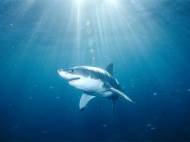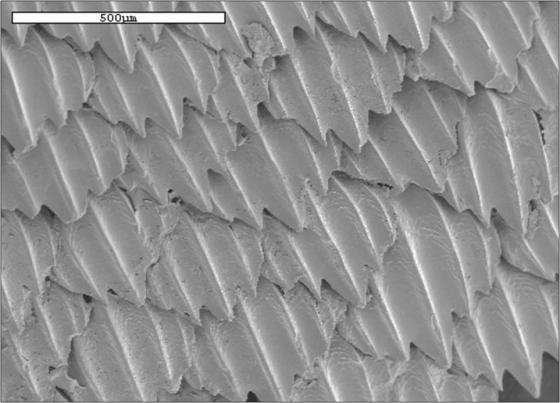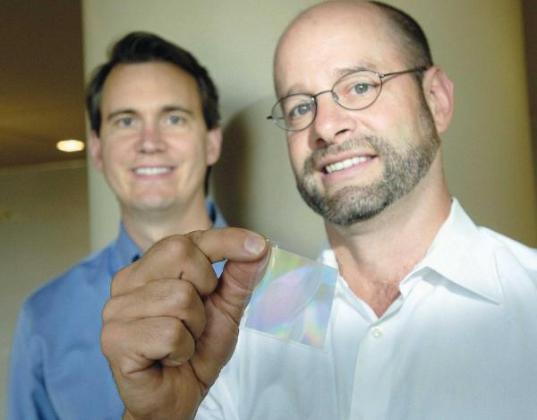Shark skin biomimicry – from hull coating to health care
 The world of microorganisms is a dynamic one and all forms of life depend on microbial metabolic activity. In fact, there are more microbes living on and in every human being than there are human cells in our bodies. At the most basic level, there are microorganisms that are harmless or offer beneficial functions to living things such as aiding in digestion. Other microorganisms keep harmful bacteria at bay. However, there are some destructive microorganisms, such as the kind that attack living cells or create toxins that can cause illness and death. Since these two types of microorganisms often live side-by-side, it has been a significant challenge, specifically within the healthcare community, to control the growth of the destructive organisms while promoting the growth of the beneficial.
The world of microorganisms is a dynamic one and all forms of life depend on microbial metabolic activity. In fact, there are more microbes living on and in every human being than there are human cells in our bodies. At the most basic level, there are microorganisms that are harmless or offer beneficial functions to living things such as aiding in digestion. Other microorganisms keep harmful bacteria at bay. However, there are some destructive microorganisms, such as the kind that attack living cells or create toxins that can cause illness and death. Since these two types of microorganisms often live side-by-side, it has been a significant challenge, specifically within the healthcare community, to control the growth of the destructive organisms while promoting the growth of the beneficial.
Sharklet Technologies, a Florida-based biotechnology company, has engineered a surface technology product called Sharklet that controls the growth of dangerous bacteria such as Staph a., Pseudomonas aeruginosa, and E. coli among others. It is non-toxic, long-lasting and a no-kill surface which controls the growth of undesirable microorganisms and inhibit the formation of biofilms. Until recently, kill strategies including antibiotics, disinfectants and dangerous chemicals have been the primary weapons to control bacterial growth. However, these kill strategies and their overuse has led to increased bacterial resistance, causing harm to people and the environment.
This weapon in the war on bacteria didn’t spring from a medical laboratory. Instead, it is rooted in materials science and engineering Professor Tony Brennan’s efforts to solve a seemingly unrelated problem: how to keep algae from coating the hulls of submarines and ships. Convinced he could stop tiny algal spores from attaching by using rows of microscopic channels, he had eagerly awaited a look at experimental samples previously submerged in the harbor. But the results were abysmal, with the samples coming out of the water festooned with algae.
He and a handful of colleagues were watching an algae-coated nuclear submarine leave port when the question popped into his head. “The submarine looked like a big whale lumbering out of the harbor,” Brennan says. “I asked, ‘Do whales foul?’ And everyone said, ‘yeah, whales are heavily fouled.’ So I started asking the question, ‘which marine and freshwater animals don’t foul?’”. He couldn’t get the question answered to his satisfaction that day. But follow-up research revealed that of all big marine animals, sharks remain most glisteningly smooth.
Brennan spent much of his career engineering new biomaterials for dental implants. He asked a colleague at the Florida Institute of Technology, Geoffrey Swain, to take an impression of a shark skin using a common silicone material. Like an impression for an ordinary tooth crown, it provided a negative imprint — in this case, a small, but visible pattern of rounded-off, diamond like, scales. (Many people believe sharks don’t have scales. In fact, the creatures’ scales are very small. They are known as placoid scales, or dermal denticles.)
Each scale was made up of seven tiny ribs. Brennan used a special tool, an optical profilometer, to measure the scales’ corresponding roughness. To his surprise, the ribs’ width-to-height ratios closely matched one of his mathematical models for roughness — one that he had estimated would discourage algae spores from settling.
At the time, Brennan believed the spores would have a negative reaction to surface roughness features measured in a handful of microns. The shark scale ribs were far bigger. So he shrunk the sharkskin rib pattern by a factor of 20, separating each rib by two to five microns. Tapping a process similar to the one used to make computer chips, he next fabricated thousands of these tiny “riblet” patterns on plastic.
He plunged the plastic into algae-laced seawater, waited an hour and pulled it out.
“The first time we tested it,” Brennan says, “we had an 85-percent reduction in the settlement of green algae.”
It was just one small test with just one type of fouling organism, but the results were exciting. That’s because algae and its ilk are major problems not only for the Navy but for all shippers. Fouled vessels have more drag as they move through water, slowing them and cutting into their fuel efficiency. The Navy estimates fouled hulls use 15 to 30 percent more fuel than clean ones, raising its fuel bill by tens of millions of dollars.
Marine fouling organisms and bacteria are very different life forms. But the two also share important similarities. Both can move, and both put down adhesive pads when they first stick to a surface. Green algae and many bacteria also seem to appreciate company. They take hold singly or in small groups, and afterwards seek to establish large colonies.
“Like other life forms”, Brennan says, ”bacteria and fouling organisms seek the path of least resistance”. He believes the Sharklet pattern discourages colonization because it requires too much energy to put down roots. With enough surface protected, the theory goes, they die or become less of a threat.











Since the discovery of bacteria, conventional thinking has led people to kill microorganisms to control them. Yet, overuse and abuse of antibiotics, disinfectants and other kill strategies have contributed to the creation of superbugs such as MRSA and others commonly found in hospitals and the general community. As biocidal approaches have made bacteria stronger, new strategies are needed to manage bacterial growth while contributing to an overall healthy environment to protect people. Such a solution may be found in Sharklet.
Sharklet is a simple solution for a complex problem. The patented, microscopic pattern manufactured by Sharklet Technologies creates a surface upon which bacteria do not like to grow. The Sharklet pattern is manufactured onto adhesive-backed skins that may be applied to high-touch areas to reduce the transfer of bacteria among people. Sharklet Technologies is also developing Sharklet-patterned medical devices including a Sharklet Urinary Catheter to help reduce hospital-acquired infections.
Dr.A.Jagadeesh Nellore(AP),India
hello dear dr
we are a group that work in bionic animal and decided to make bionic shark.
we need yor help
our group is a student academic group our meber study mechanical and electronic engineering.we are a six member in our group 4 mechanical engineering and 2 electronic engineering.
at least if you can help me please help me because you can help to make one of intersting thing in world.
thanks for read my letter.